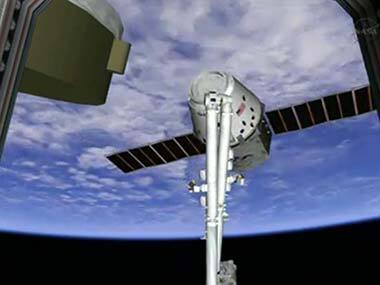Astronomers have discovered a unique triple star system which could reveal the true nature of gravity. US astronomers using the National Science Foundation’s Green Bank Telescope (GBT) found the stellar system of two white dwarf stars and a superdense neutron star, all packed within a space smaller than Earth’s orbit around the Sun. The closeness of the stars, combined with their nature, has allowed scientists to make the best measurements yet of the complex gravitational interactions in such a system. “This triple system gives us a natural cosmic laboratory far better than anything found before for learning exactly how such three-body systems work and potentially for detecting problems with General Relativity that physicists expect to see under extreme conditions,” said Scott Ransom of the National Radio Astronomy Observatory (NRAO) in US. [caption id=“attachment_1324519” align=“alignleft” width=“380”]  AP[/caption] West Virginia University graduate student Jason Boyles (now at Western Kentucky University) uncovered the pulsar as part of a large-scale search for pulsars with the GBT. Pulsars are neutron stars that emit lighthouse-like beams of radio waves that rapidly sweep through space as the object spins on its axis. One of the search’s discoveries was a pulsar some 4,200 light-years from Earth, spinning nearly 366 times per second. Such rapidly-spinning pulsars are called millisecond pulsars, and can be used by astronomers as precision tools for studying a variety of phenomena, including searches for the elusive gravitational waves. Subsequent observations showed that the pulsar is in a close orbit with a white dwarf star, and that pair is in orbit with another, more-distant white dwarf. “This is the first millisecond pulsar found in such a system, and we immediately recognised that it provides us a tremendous opportunity to study the effects and nature of gravity,” Ransom said. The system gives the best opportunity yet to discover a violation of a concept called the Equivalence Principle. The principle states that the effect of gravity on a body does not depend on the nature or internal structure of that body. When a massive star explodes as a supernova and its remains collapse into a superdense neutron star, some of its mass is converted into gravitational binding energy that holds the dense star together. The Strong Equivalence Principle says that this binding energy still will react gravitationally as if it were mass. Nearly all alternatives to General Relativity hold that it will not. Under the strong equivalence principle, the gravitational effect of the outer white dwarf would be identical for both the inner white dwarf and the neutron star. If the strong equivalence principle is invalid under the conditions in this system, the outer star’s gravitational effect on the inner white dwarf and the neutron star would be slightly different and the high-precision pulsar timing observations could easily show that, researchers said.
Astronomers have discovered a unique triple star system which could reveal the true nature of gravity. US astronomers using the National Science Foundation’s Green Bank Telescope (GBT) found the stellar system of two white dwarf stars and a superdense neutron star, all packed within a space smaller than Earth’s orbit around the Sun. The closeness of the stars, combined with their nature, has allowed scientists to make the best measurements yet of the complex gravitational interactions in such a system.
Advertisement
End of Article
Written by FP Archives
see more


)

)
)
)
)
)
)
)
)



